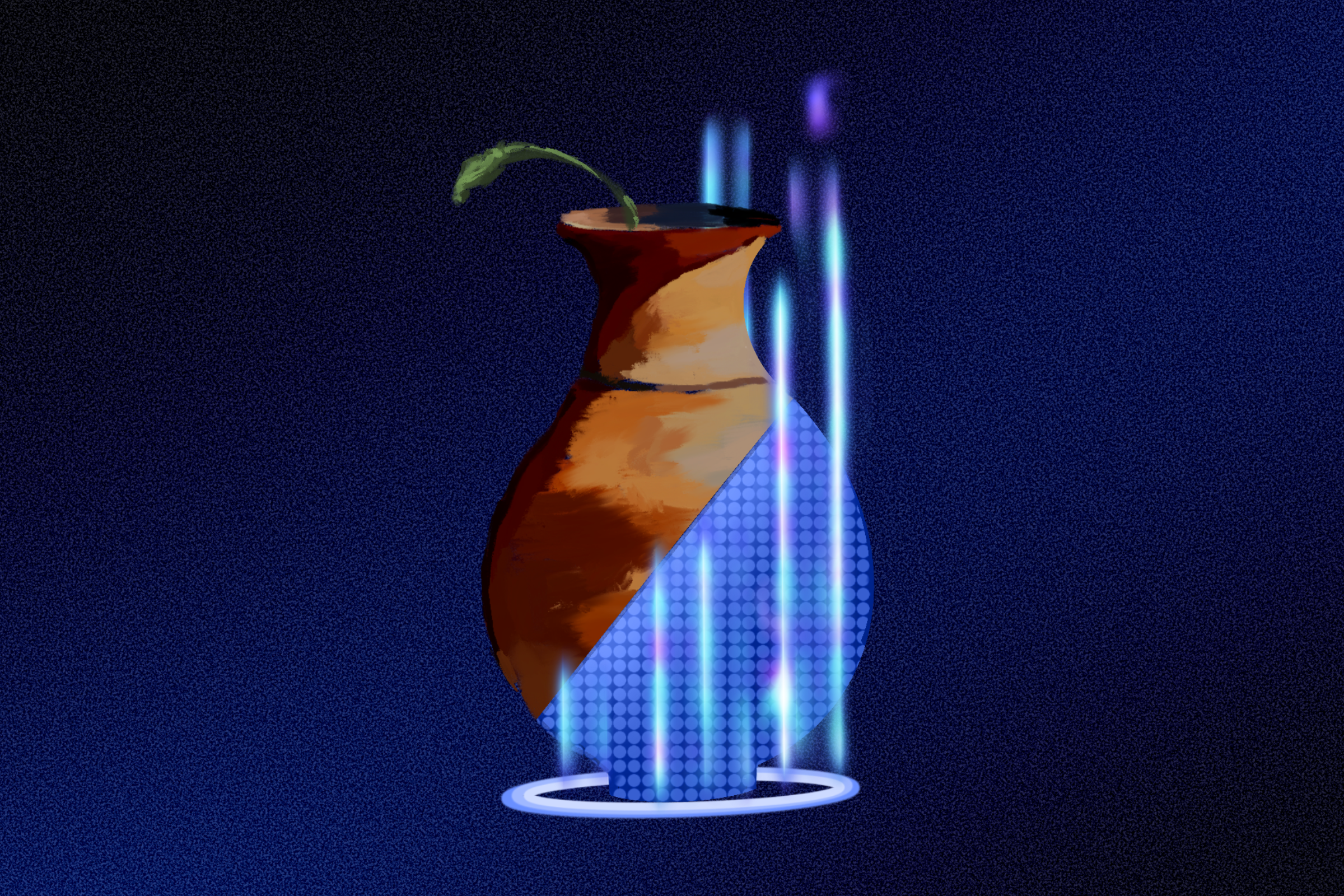About 25 University of Michigan students, faculty and community members virtually attended a conversation with artist Morehshin Allahyari Friday afternoon. Titled “Rather a Jinn than a Cyborg,” the discussion centered around Allahyari’s recent works, the artistic and research applications of technology and looking at technology through an activist lens. The conversation, sponsored by the Digital Studies Institute, was the fourth installment of DISCO Network’s Search Engines event series, which invites artists to the University to share how they use technology as a medium to discuss social justice topics.
Allahyari, an Iranian-Kurdish artist based in New York and Oakland, uses digital simulations, sculptures, artificial intelligence and other technology to create archival and narrative art that combats Western digital colonialism in the Middle East and North Africa. Digital colonialism, which Allahyari defines as using technology to reproduce colonial power dynamics, threatens the data and culture of the Global South.
In her introductory speech, Allahyari said she hopes to combine research and technology to participate in social activism.
“For the last decade, perhaps, my work has been about building worlds between art, technology, activism and history through a very intense research-based and interdisciplinary, perhaps anti-disciplinary, framework,” Allahyari said.
Allahyari said by using technology in her work, she is able to look at how technology is meant to function and tie the past and present together.
“I use different mediums, from 3D simulation, to code, to video, to sculpture and storytelling, as tools to refigure history and futurity, wondering, ‘How else?’ and ‘What else?’ and ‘What if?’” Allahyari said. “Rather than allowing these new technologies’ novelty factors to drive my work, I am interested in questioning these tools, examining how they function or (revising) their makers’ values.”
Allahyari briefly explained her work by visually describing jinn, unseen supernatural shapeshifters from the Quran that exist parallel to humans, as Queer and female monstrous figures in “She Who Sees the Unknown”. The research project, inspired by the artist’s childhood in Iran, used models and scans of figures of the past to challenge power structures of the present. Allahyari said she compared jinn to the hybridity of cyborgs, which are associated with the white and Western worlds Allahyari challenges.
“Developing this project since (the) end of 2016, I started to become really interested in the figure of the jinn as something that I felt as this hybrid potential of storytelling,” Allahyari said. “Similar to how Donna Haraway talks about the figure of the cyborg as this figure that … is between a machine and a human and an animal, and these interspecies relationships between these modes of being, … the cyborg allows us a framework for connecting and seeing the world and different concepts and theories around it.”
Pedram Baldari, assistant professor of Art & Design, helped to facilitate the discussion. In the conversation with Allahyari, Baldari said the artist’s interdisciplinary methods require significantly more research than those unfamiliar with art would expect.
“(Allahyari) pointed out a very interesting question that is floating mostly in the art world or around the art world by the people who look at the artistic practice from the outside of the artistic practice,” Baldari said. “‘What exactly (does it take) to actually generate interdisciplinary artistic practice?’ There are a lot of points that you have to consider, and sometimes even it becomes very scholarly. You require a lot of in-depth research.”
Allahyari used interdisciplinary research in Material Speculation: ISIS, a previous project in which she recreated and 3D printed 12 artifacts from ancient Hatra and Nineveh that were publicly destroyed by ISIS militants in 2015. She said her research became so important that she chose to physically include it in her art.
“This research with the Material Speculation sculptural work became such an important part of making the work, arriving to a place where I was able to make the work as accurately as possible, as closely to how the objects actually looked like before they were destroyed, that I felt like I had to actually embed an aspect of the research into the object,” Allahyari said. “If you look at that work again … inside of the sculptures, I have embedded these memory cards and flash drives which contain all the research that I had done.”
The conversation also encompassed discussion of open access data and biased technology. In one of her works, entitled Moon-Faced, Allahyari used artificial intelligence to generate paintings from the Qajar Dynasty. The artist was inspired by the word “moon-faced,” which described genderless beauty in both men and women in ancient Persia, but shifted to describe only feminine beauty in modern Iran. The AI model eventually unlearned the idea of gendered beauty, which Allahyari used to undo the effects of Westernization on nonbinary appearances.
Allahyari said she had to build her own library for the AI model to learn from because the technology was not allowed to access data from some Western museums.
“AI itself is a biased system,” Allahyari said. “I was building basically my own central library for (Moon-Faced), first of all because … it couldn’t even trace back anything about the Qajar Dynasty, which is one of the most important visual cultural (eras). There’s a lot of material actually from this era in different museums around the world … but (the AI) still could not pull from that data.”
The Search Engines initiative is backed by DISCO Network, a collaboration between research labs at universities across the country with financial support from the Mellon Foundation. Rackham student Oğuz Kayır, a graduate curator for Search Engines, organized the event with Allahyari.
In an interview with The Michigan Daily, Kayır said he decided to pursue the role and selected Allahyari for the event to bring Middle Eastern art to North American universities that may not be as exposed to the region’s culture and history.
“I wanted to present myself as some sort of bridge across the Atlantic to build a connection with the Global North, the ‘North American Academy,’ with Middle Eastern art circuits,” Kayır said.
Although he described himself as primarily a researcher, Kayır said he believes art is an important method for teaching, sharing ideas and continuing to shift societal norms.
“I always find art very interesting as a mode for pedagogy,” Kayır said. “It is a very different medium to teach people as well, to teach young minds. So definitely, it has a lot of interdisciplinary and transdisciplinary resonances for a better future, using art as a tool to build more anti-patriarchy, anti-ableist and anti-racist speech.”
Daily Summer News Editor Marissa Corsi can be reached at macorsi@umich.edu.







